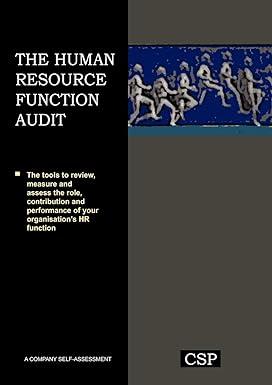Question
The company produces and sells a single product. The standard cost card for the product follows: Standard Cost Card%u2014Per Unit Direct materials, 4.50 yards at
The company produces and sells a single product. The standard cost card for the product follows: |
| Standard Cost Card%u2014Per Unit | ||
| Direct materials, 4.50 yards at $3.80 per yard | $ | 17.10 |
| Direct labor, 1.7 direct labor-hours at $11.00 per direct labor-hour | 18.70 | |
| Variable overhead, 1.7 direct labor-hours at $2.50 per direct labor-hour | 4.25 | |
| Fixed overhead, 1.7 direct-labor hours at $5.50 per direct labor-hour | 9.35 | |
| Standard cost per unit | $ | 49.40 |
| | | |
The following additional information is available for the year just completed: |
| a. | The company manufactured 15,000 units of product during the year. |
| b. | A total of 65,000 yards of material was purchased during the year at a cost of $4.00 per yard. All of this material was used to manufacture the 15,000 units. There were no beginning or ending inventories for the year. |
| c. | The company worked 28,000 direct labor-hours during the year at a cost of $10.70 per hour. |
| d. | Overhead cost is applied to products on the basis of standard direct labor-hours. Data relating to manufacturing overhead costs follow: |
| Denominator activity level (direct labor-hours) | 23,000 | |
| Budgeted fixed overhead costs | $ | 126,500 |
| Actual fixed overhead costs | $ | 124,000 |
| Actual variable overhead costs | $ | 72,800 |
| Required: | |
| 1. | Compute the direct materials price and quantity variances for the year. (Input all amounts as positive values. Leave no cells blank - be certain to enter "0" wherever required. Indicate the effect of each variance by selecting "F" for favorable, "U" for unfavorable, and "None" for no effect (i.e., zero variance). Omit the "$" sign in your response.) |
| Direct materials quantity variance | $ | |
| Direct materials price variance | $ | |
| 2. | Compute the direct labor rate and efficiency variances for the year. (Input all amounts as positive values. Leave no cells blank - be certain to enter "0" wherever required. Indicate the effect of each variance by selecting "F" for favorable, "U" for unfavorable, and "None" for no effect (i.e., zero variance). Omit the "$" sign in your response.) |
| Direct labor efficiency variance | $ | |
| Direct labor rate variance | $ | |
| 3. | For manufacturing overhead, compute the following: |
| a. | The variable overhead rate and efficiency variances for the year. (Input all amounts as positive values. Leave no cells blank - be certain to enter "0" wherever required. Indicate the effect of each variance by selecting "F" for favorable, "U" for unfavorable, and "None" for no effect (i.e., zero variance). Omit the "$" sign in your response.) |
| Efficiency variance | $ | |
| Rate variance | $ | |
| b. | The fixed overhead budget and volume variances for the year. (Input all amounts as positive values. Leave no cells blank - be certain to enter "0" wherever required. Indicate the effect of each variance by selecting "F" for favorable, "U" for unfavorable, and "None" for no effect (i.e., zero variance). Omit the "$" sign in your response.) |
| Volume variance | $ | |
| Budget variance | $ | |
| Without working, no rating! | ||
Step by Step Solution
There are 3 Steps involved in it
Step: 1

Get Instant Access to Expert-Tailored Solutions
See step-by-step solutions with expert insights and AI powered tools for academic success
Step: 2

Step: 3

Ace Your Homework with AI
Get the answers you need in no time with our AI-driven, step-by-step assistance
Get Started


